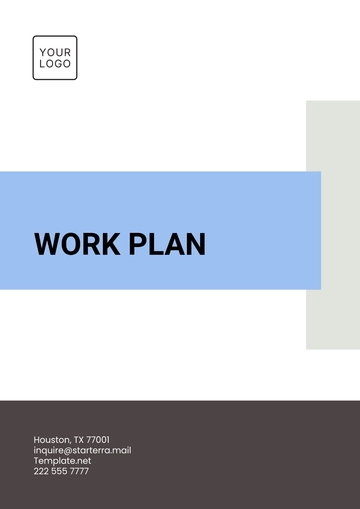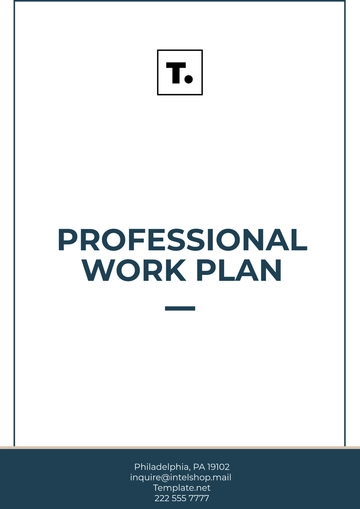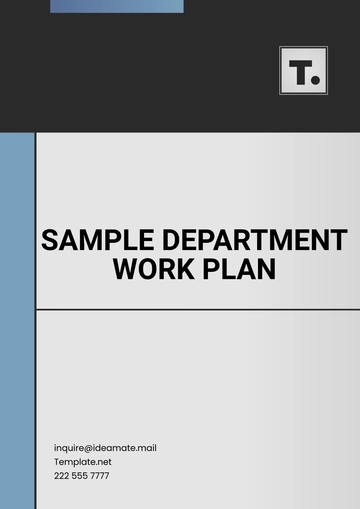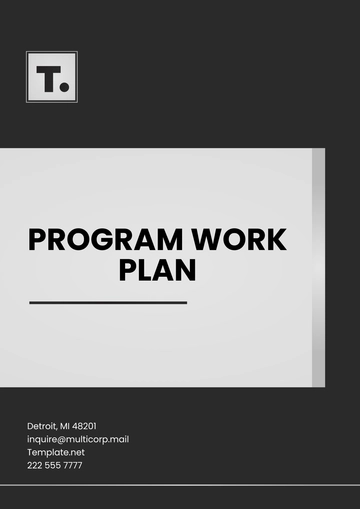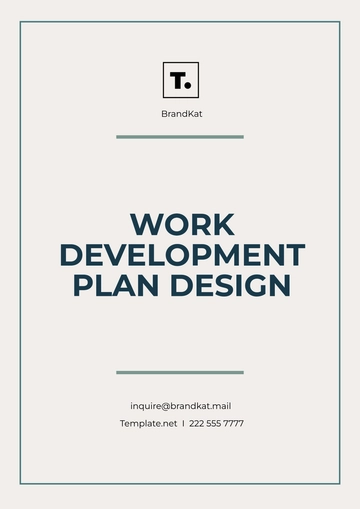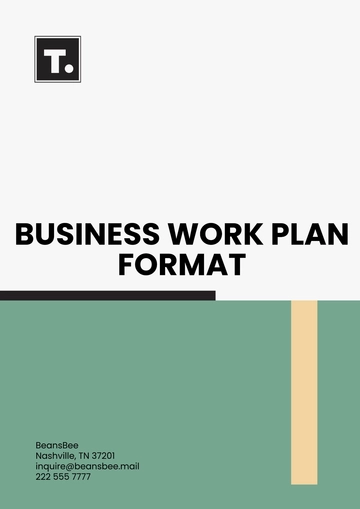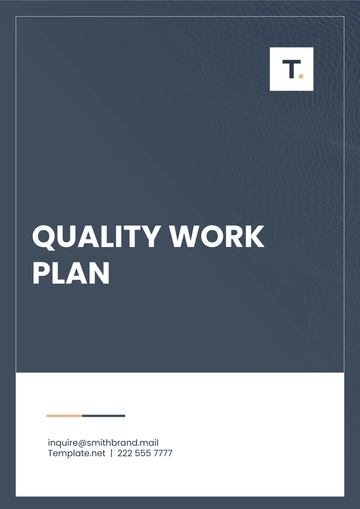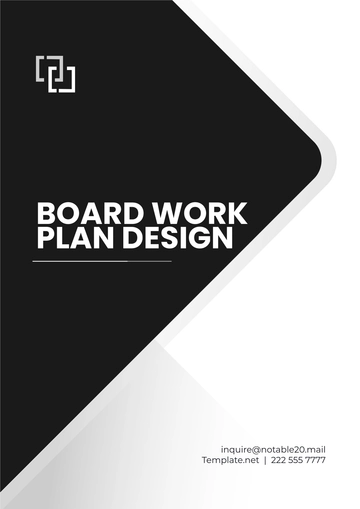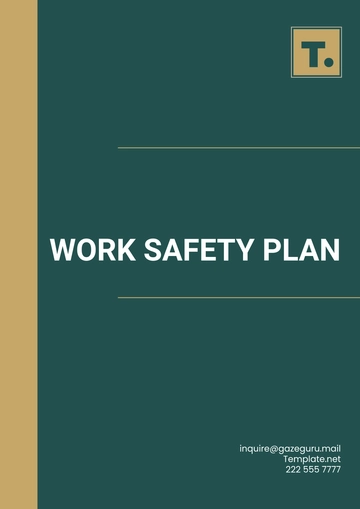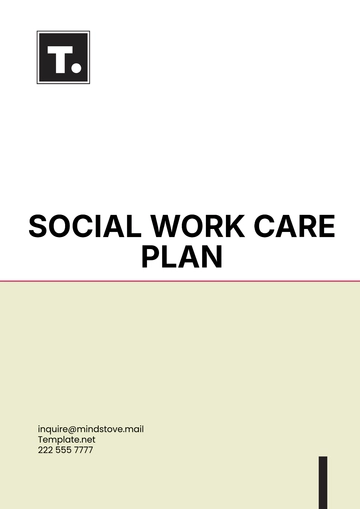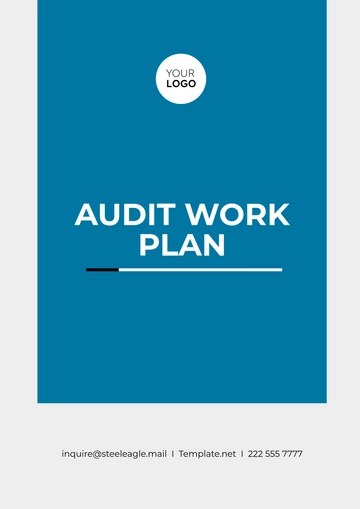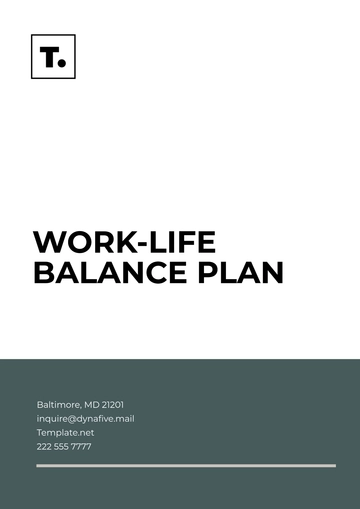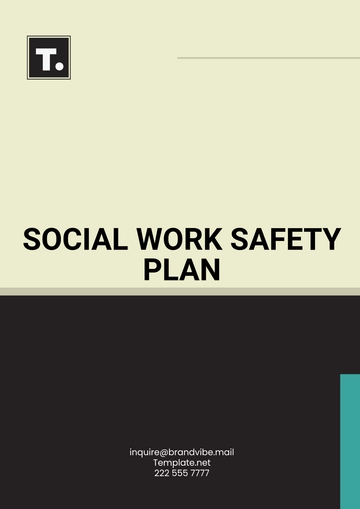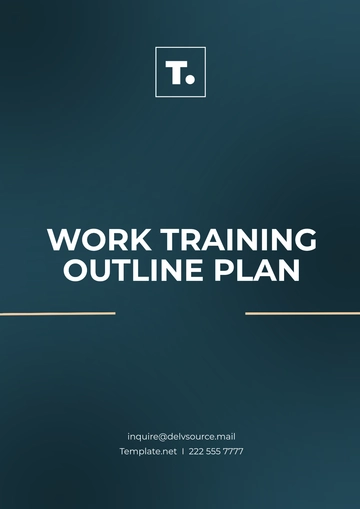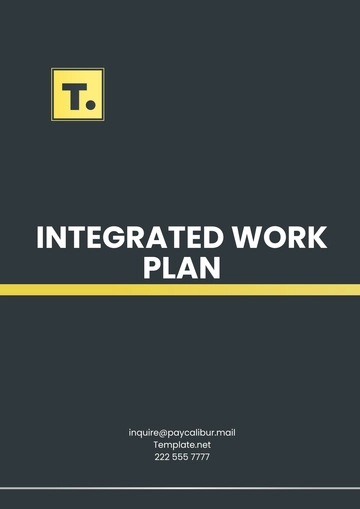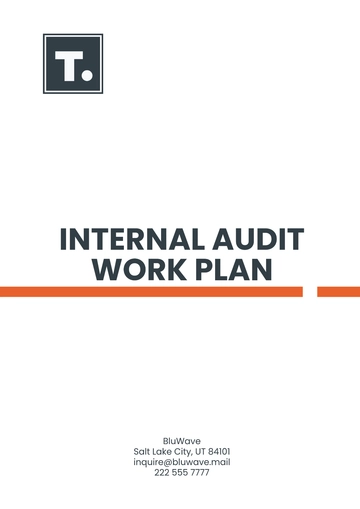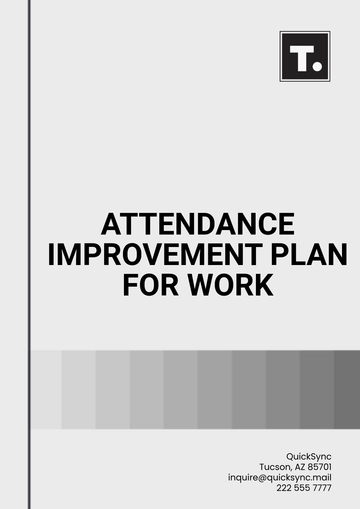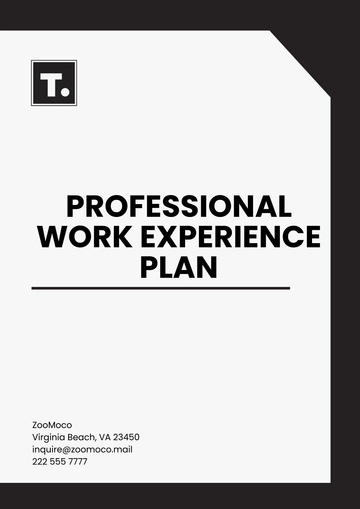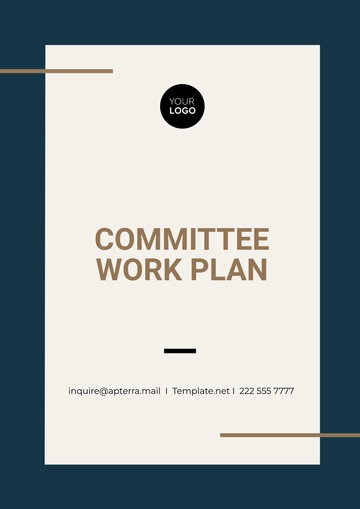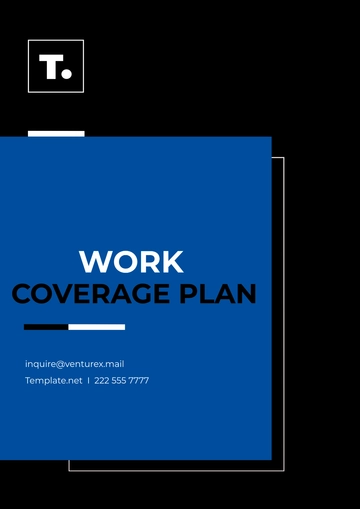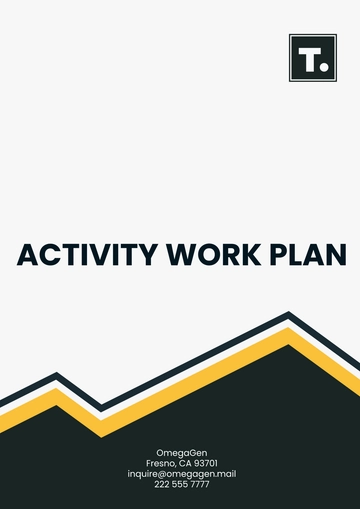Free Strategic Workplace Ergonomics Implementation Plan
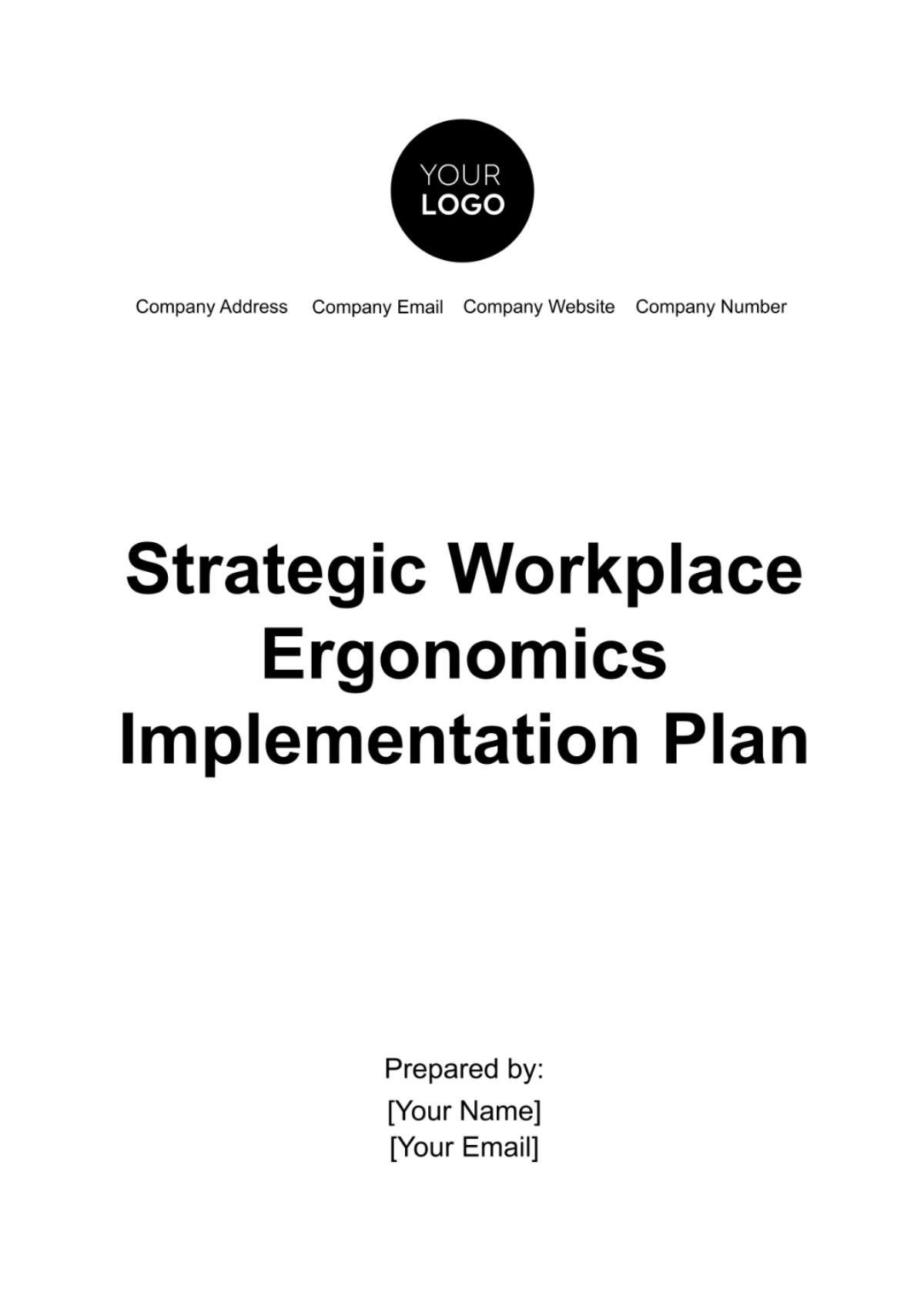
I. Introduction
Ergonomics is the science of designing the workplace, keeping in mind the capabilities and limitations of the worker. The primary goal is to ensure that work tasks, equipment, information, and the environment fit each employee to optimize health, safety, and performance. In this strategic implementation plan, [Your Company Name] commits to an ergonomic approach to enhance workplace safety, employee well-being, and overall productivity.
II. Objectives of the Ergonomics Implementation Plan
A. Reduce Workplace Injuries and Illnesses
The primary goal here is to significantly lower the incidence of musculoskeletal disorders (MSDs) and other injuries that can occur due to poor ergonomic practices. This involves a comprehensive approach, including analyzing current injury rates, identifying common causes of workplace injuries, and implementing targeted ergonomic solutions.
These solutions could range from redesigning workstations to modifying the way certain tasks are performed. The focus will be on preemptive measures that can help in avoiding long-term injuries, like chronic back pain or carpal tunnel syndrome, which are often the result of poor workplace ergonomics.
B. Enhance Employee Comfort and Well-being
This objective revolves around creating an environment where employees feel physically comfortable and supported. The approach encompasses assessing individual needs and preferences regarding seating, desk height, computer placement, and other ergonomic factors that contribute to comfort.
By addressing these factors, the plan aims to not only reduce physical strain but also boost employee morale and mental well-being. This holistic approach recognizes the interconnection between physical comfort and overall job satisfaction, and its impact on mental health.
C. Improve Productivity and Quality of Work
Ergonomic improvements are directly linked to enhanced productivity and work quality. This objective focuses on designing workstations and tasks in a way that aligns with human capabilities and limitations. The plan involves a detailed analysis of current work practices and how they can be optimized for efficiency. For example, reducing unnecessary movements, improving access to tools and equipment, and ensuring that employees are working in postures that minimize fatigue and strain. These improvements not only make work more efficient but also reduce the likelihood of errors, thereby enhancing the overall quality of output.
D. Promote a Culture of Health and Safety
The ultimate goal is to cultivate a workplace culture that prioritizes health, safety, and ergonomic awareness. This involves not just implementing ergonomic practices but also ensuring that employees understand the importance of ergonomics.
III. Assessment and Analysis
A. Workstation Assessments
Procedure: Conduct detailed evaluations of all workstations, focusing on layout, equipment, and task requirements. Utilize checklists and observation techniques to identify ergonomic risks.
Tools: Utilize assessment tools such as the Rapid Upper Limb Assessment (RULA) or the Rapid Entire Body Assessment (REBA).
B. Employee Surveys and Interviews
Procedure: Distribute surveys and conduct interviews to gather employee feedback on physical discomfort, workstation setup, and ergonomic concerns.
Survey Sample
Question 1: | Rate your level of comfort at your workstation on a scale of 1 to 10. |
Question 2: | Identify any physical discomforts experienced during the workday. |
C. Incident and Injury Reports Analysis:
Procedure: Review historical data on workplace injuries and illnesses to identify trends and areas of concern related to ergonomics.
IV. Implementation Strategies
A. Ergonomic Workstation Redesign
This strategy focuses on modifying existing workstations based on the findings from ergonomic assessments. It includes adjusting the height and position of chairs, desks, and monitors, as well as introducing ergonomic tools like adjustable chairs and keyboard trays. These changes aim to align the workstation with the ergonomic needs of each employee, reducing strain and improving comfort.
B. Task Redesign
Redesigning work tasks is crucial for minimizing ergonomic risks associated with repetitive motions, excessive force, and awkward postures. This might involve rotating job roles among employees to prevent repetitive strain injuries or redesigning work processes to eliminate harmful movements. Task redesign not only reduces the risk of physical injury but also adds variety to the work, which can enhance job satisfaction.
C. Environmental Adjustments
The work environment significantly impacts ergonomic comfort. This strategy involves optimizing factors like lighting, noise levels, and climate control. Installing task lighting and anti-glare screens helps reduce eye strain, while adequate air circulation and temperature control can prevent discomfort and fatigue. A well-designed environment supports ergonomic well-being and can improve overall work efficiency.
V. Training and Education
A. Ergonomic Awareness Training
Objective: Educate employees on the principles of ergonomics, risk factors, and the importance of proper posture and workstation setup.
Methodology:
a. Conduct workshops and seminars.
b. Provide online training modules.
B. Specific Skill Training
Objective: Train employees in specific ergonomic practices relevant to their job roles.
Methodology:
a. Hands-on training for correct lifting techniques.
b. Instruction on the proper use of ergonomic tools and equipment.
VI. Evaluation Methods
A. Post-Implementation Assessments
Procedure: | Repeat workstation and task assessments periodically to gauge the effectiveness of ergonomic changes. |
Metrics: | Measure reductions in reported discomfort, improvements in posture, and proper usage of ergonomic tools. |
B. Employee Feedback Collection
Method: | Conduct follow-up surveys and interviews to understand employee satisfaction and areas needing further improvement. |
Feedback Form Example: | Question: How effective do you find the recent ergonomic changes in your workstation? Rating Scale: 1 (Not Effective) to 5 (Highly Effective) |
C. Injury and Illness Rate Tracking
Procedure: | Monitor workplace health records to track changes in the incidence of MSDs and other related injuries. |
Metrics: | Compare pre and post-implementation injury rates. |
VII. Reporting and Documentation
Regular Progress Reports | |
Content: | Document the progress of ergonomic implementations, feedback received, and any challenges encountered. |
Frequency: | Quarterly reporting to management and stakeholders. |
Documentation of Training Sessions | |
Content: | Maintain records of all training sessions, including topics covered, attendance, and employee feedback. |
Format: | Electronic or paper records, as per company policy. |
Incident Reporting | |
Procedure: | Establish a clear process for employees to report ergonomic-related incidents or concerns. |
Format: | Use standardized forms for consistency and thorough documentation. |
VIII. Continuous Improvement Strategies
Continuous improvement in workplace ergonomics is vital to maintain and enhance the effectiveness of implemented measures.
A. Ongoing Education and Training
Objective: The objective here is to keep the workforce informed and updated about the latest developments in ergonomics. As ergonomic research evolves, new and more effective practices are discovered. Regular training ensures that employees are always equipped with the most current knowledge and skills.
Action: Actions include scheduling annual or bi-annual training sessions to review ergonomic principles, introducing new training modules based on the latest ergonomic research, and encouraging employees to participate in external webinars or conferences on ergonomics. Additionally, refresher courses can be offered to reinforce previous training and update employees on new techniques or equipment.
B. Regular Review of Ergonomic Standards
Objective: Ensure the company's ergonomic standards remain current and effective.
Action: Conduct an annual review of all ergonomic policies, guidelines, and practices. This review process should involve a committee comprising representatives from different departments, including employees who directly use the ergonomic tools and setups. The review should assess the relevance and effectiveness of current standards and make adjustments as necessary.
C. Employee Involvement and Feedback Loop
Objective: A critical aspect of continuous improvement is ongoing input from employees, who are the end-users of ergonomic practices. Their feedback provides valuable insights into the practicality and effectiveness of ergonomic measures.
Action: Establish a system for continuous feedback, such as suggestion boxes, regular ergonomic-focused meetings, or digital feedback platforms. Encourage employees to share their experiences, challenges, and ideas regarding workplace ergonomics.
IX. Budget and Resource Allocation
A. Initial Investment
Breakdown of costs for ergonomic equipment, training materials, and professional assessments.
Item | Description | Estimated Cost |
Ergonomic Chairs | Adjustable, with lumbar support | [Amount] |
Training Programs | External consultants and materials | [Amount] |
Assessment Tools | Software and checklists | [Amount] |
B. Ongoing Costs
Maintenance of Ergonomic Equipment: This includes servicing adjustable chairs, replacing worn-out components, or upgrading outdated tools to maintain their ergonomic benefits.
Refresher Training Sessions: To keep employees informed and skilled in ergonomic practices, periodic refresher training is essential.
Continuous Assessments: Regular ergonomic assessments of workstations and environments are necessary to identify new risks or areas for improvement.
Estimation Method: The estimation of ongoing costs is based on the initial investment and findings from annual reviews. It considers factors like the lifespan of equipment, the frequency of training sessions, and the schedule of assessments to provide a realistic budget projection.
X. Conclusion
The successful implementation of this Strategic Workplace Ergonomics Implementation Plan at [Your Company Name] is expected to foster a healthier, more comfortable, and more productive work environment. Through continuous assessment, feedback, and improvement, the company commits to maintaining high standards in workplace ergonomics, ultimately benefiting the overall well-being of its employees and the organization's efficiency.
- 100% Customizable, free editor
- Access 1 Million+ Templates, photo’s & graphics
- Download or share as a template
- Click and replace photos, graphics, text, backgrounds
- Resize, crop, AI write & more
- Access advanced editor
Introducing our Strategic Workplace Ergonomics Implementation Plan Template, exclusively available on Template.net. This editable and customizable resource empowers you to craft a tailored strategy for optimal workplace comfort and efficiency. Seamlessly adjust content using our Ai Editor Tool, ensuring alignment with your organization's unique needs. Elevate workplace ergonomics effortlessly today!
You may also like
- Finance Plan
- Construction Plan
- Sales Plan
- Development Plan
- Career Plan
- Budget Plan
- HR Plan
- Education Plan
- Transition Plan
- Work Plan
- Training Plan
- Communication Plan
- Operation Plan
- Health And Safety Plan
- Strategy Plan
- Professional Development Plan
- Advertising Plan
- Risk Management Plan
- Restaurant Plan
- School Plan
- Nursing Home Patient Care Plan
- Nursing Care Plan
- Plan Event
- Startup Plan
- Social Media Plan
- Staffing Plan
- Annual Plan
- Content Plan
- Payment Plan
- Implementation Plan
- Hotel Plan
- Workout Plan
- Accounting Plan
- Campaign Plan
- Essay Plan
- 30 60 90 Day Plan
- Research Plan
- Recruitment Plan
- 90 Day Plan
- Quarterly Plan
- Emergency Plan
- 5 Year Plan
- Gym Plan
- Personal Plan
- IT and Software Plan
- Treatment Plan
- Real Estate Plan
- Law Firm Plan
- Healthcare Plan
- Improvement Plan
- Media Plan
- 5 Year Business Plan
- Learning Plan
- Marketing Campaign Plan
- Travel Agency Plan
- Cleaning Services Plan
- Interior Design Plan
- Performance Plan
- PR Plan
- Birth Plan
- Life Plan
- SEO Plan
- Disaster Recovery Plan
- Continuity Plan
- Launch Plan
- Legal Plan
- Behavior Plan
- Performance Improvement Plan
- Salon Plan
- Security Plan
- Security Management Plan
- Employee Development Plan
- Quality Plan
- Service Improvement Plan
- Growth Plan
- Incident Response Plan
- Basketball Plan
- Emergency Action Plan
- Product Launch Plan
- Spa Plan
- Employee Training Plan
- Data Analysis Plan
- Employee Action Plan
- Territory Plan
- Audit Plan
- Classroom Plan
- Activity Plan
- Parenting Plan
- Care Plan
- Project Execution Plan
- Exercise Plan
- Internship Plan
- Software Development Plan
- Continuous Improvement Plan
- Leave Plan
- 90 Day Sales Plan
- Advertising Agency Plan
- Employee Transition Plan
- Smart Action Plan
- Workplace Safety Plan
- Behavior Change Plan
- Contingency Plan
- Continuity of Operations Plan
- Health Plan
- Quality Control Plan
- Self Plan
- Sports Development Plan
- Change Management Plan
- Ecommerce Plan
- Personal Financial Plan
- Process Improvement Plan
- 30-60-90 Day Sales Plan
- Crisis Management Plan
- Engagement Plan
- Execution Plan
- Pandemic Plan
- Quality Assurance Plan
- Service Continuity Plan
- Agile Project Plan
- Fundraising Plan
- Job Transition Plan
- Asset Maintenance Plan
- Maintenance Plan
- Software Test Plan
- Staff Training and Development Plan
- 3 Year Plan
- Brand Activation Plan
- Release Plan
- Resource Plan
- Risk Mitigation Plan
- Teacher Plan
- 30 60 90 Day Plan for New Manager
- Food Safety Plan
- Food Truck Plan
- Hiring Plan
- Quality Management Plan
- Wellness Plan
- Behavior Intervention Plan
- Bonus Plan
- Investment Plan
- Maternity Leave Plan
- Pandemic Response Plan
- Succession Planning
- Coaching Plan
- Configuration Management Plan
- Remote Work Plan
- Self Care Plan
- Teaching Plan
- 100-Day Plan
- HACCP Plan
- Student Plan
- Sustainability Plan
- 30 60 90 Day Plan for Interview
- Access Plan
- Site Specific Safety Plan
